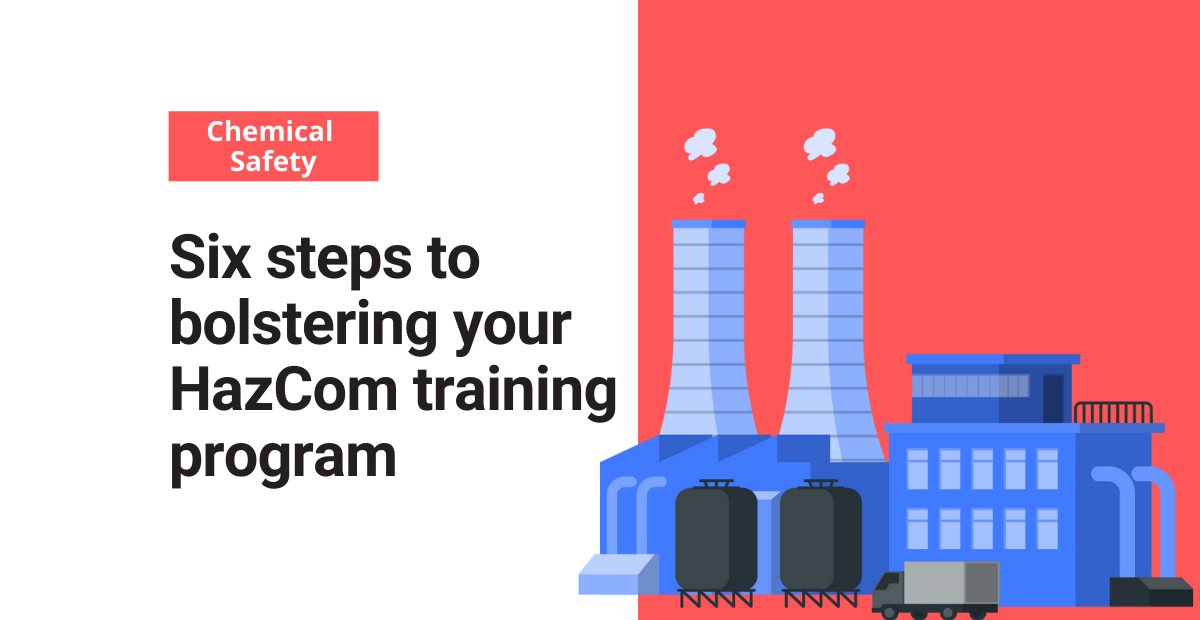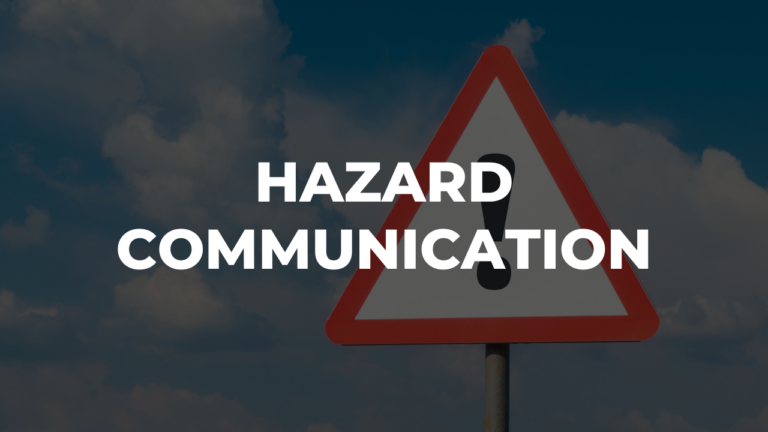OSHA’s Hazard Communication Standard (HazCom) has been one of the top 10 OSHA violations for the past decade. This is a great reason why your HazCom training program should be a top focus for your EHS team.
Need for comprehensive HazCom training
Since the alignment with the United Nation’s Globally Harmonized System of Classification and Labelling of Chemicals in 2012, there has been a shift and greater focus on four areas of the HazCom standard: hazard classification, labels, safety data sheets, and employee training. Here we will discuss how to incorporate those major areas into your HazCom training program.
Compliance with the standard involves maintaining a written hazard communication plan, readily accessible Safety Data Sheets, and ensuring chemical labels are present and complete with all the labeling requirements. The standard also outlines the training requirement where employers must provide employees with effective information and training at the time of their initial assignment (1910.1200(h)).
Additionally, training is necessary whenever you introduce new hazardous chemicals. The keyword here is “effective” which means the training will supply an employee with the knowledge of how to detect the release of chemicals, understand the hazards (physical, health, etc.), and how to protect themselves from the hazard.
Training employees to understand and identify hazards, work safely, and within compliance with the standard can arguably be one of the most important key components for a business that regularly works with hazardous materials.
HazCom primarily focuses on chemical safety and can be an intimidating subject for a new or inexperienced employee. The general workforce may or may not have had high school chemistry much less remember the components of chemistry that can support comprehension of HazCom training.
Translating chemical hazards into comprehensible bite-size packets of information that employees can use to respond and react to hazards in the workplace is challenging. Safety professionals are responsible for administering HazCom training that may feel daunting if the current HazCom training is ineffectual and may need a complete overhaul.
Tips for improving your HazCom program
How do safety professionals execute a HazCom training program that will have a lasting effect on the workforce?
Educate your team
By team, we mean your management team and front-line supervisors. The HazCom training program will not be successful unless your team understands the importance of maintaining compliance. Also, you need to make sure that employees have the proper training before their work assignments begin. Hold a safety briefing with your management team to discuss the ins and outs of HazCom.
Let your team educate you
Your team can help support the development of a stellar HazCom Training Program by providing intimate details of each work task. Begin by understanding the work that the employees do every day. This goes along with “know your audience”. To successfully communicate hazards, one needs a solid understanding of the work and where exposure risk lies.
Knowing your audience doesn’t end before the training begins it continues throughout the training session. Ask questions during the training and listen to employees’ repertoire. Being receptive to learning from others’ experiences will possibly allow you to identify areas of the HazCom program that may need improvement while reinforcing a culture of safety.
Enhance the delivery
Instead of delivering another PowerPoint presentation, think about implementing interactive components. If your high tech, you may want to consider using Virtual Reality (VR) training over text-based. One study showed that people who participated in interactive VR training were better able to identify hazardous actions than participants of text-based training.
If you’d rather not go high tech, use a case study to break the training down into bite-size pieces. Workers will relate to case studies that are from a similar industry. Using a case study will allow you to break the scenario down to emphasizing the hazard, proper response, and utilize small groups to facilitate discussion.
Drill in pictograms, reading labels, and SDS format
The employee’s first line of defense in the case of chemical release is the chemical label and the SDS. Both of these contain enough information for the employee to recognize the type of hazard and how to protect themselves. OSHA provides free training resources for all of these: pictogram handout, reference label, and SDS brief broken down by section.
Test employee knowledge
Of course with any training, testing employee knowledge is a common practice. However, not all companies test retention as they perform walkthroughs and inspections. And that’s a missed opportunity.
If an employee acts like they don’t know, spend additional time on training them to do their job safely. Pair inexperienced employees with experienced employees. They know the hazards probably more than you do and can provide first-hand knowledge that new workers may understand better.
Ensure refresher training takes place
Everyone tends to forget things over time, so it’s considered a best practice to conduct refresher training annually. In some cases, additional training may be required sooner. Employees who are found not wearing appropriate personal protective gear or doing an unintentional unsafe act will need additional training.
Additional considerations
Social networks and the strength of those relationships can influence worker safety. Build that relationship from day one and hold your team accountable for safety. If employees see the management team focus on safety and keeping them safe, that will go a long way in building a trustworthy social network and increase employee productivity.
As a safety professional employed in an industry where safety incidents can have lasting harmful effects and/or fatal results, it is vital to be aware of emerging hazards, regulation changes, and to stay actively engaged in active operations. This will ensure that you are cognizant of new hazards in the workplace and revise HazCom training as necessary. Consider the steps listed above to bolster your HazCom training program and to ensure a safer working environment.




